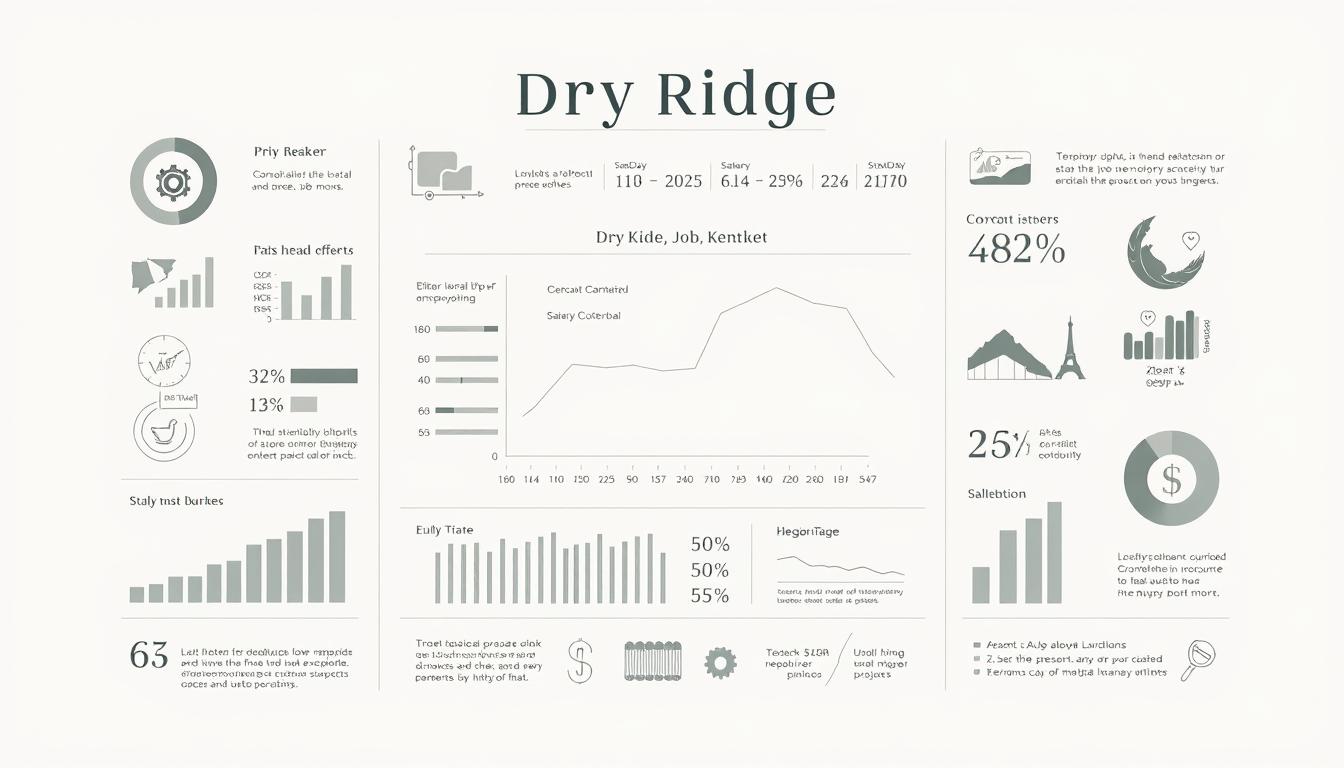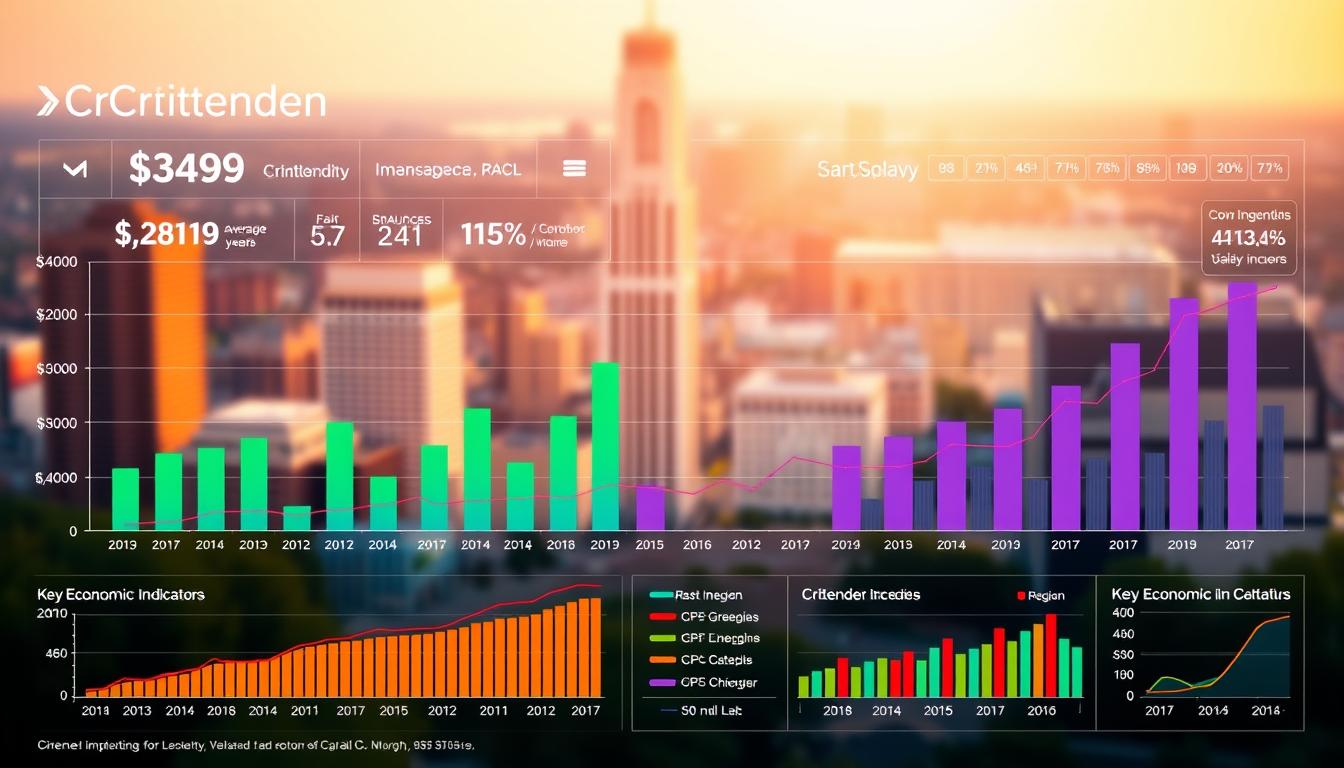Getting a job these days can feel like a maze, right? You spend hours making your resume perfect, send it off, and then… crickets. It’s super frustrating. A lot of the time, it’s not because your resume isn’t good, but because of something called an Applicant Tracking System, or ATS. These systems are like digital bouncers for job applications. Luckily, there are tools out there, like an ATS friendly checker, that can help you get past these bouncers and actually get your resume seen by a real person. Let’s talk about how an ATS friendly checker can totally change your job hunt.
Key Takeaways
- An ATS friendly checker helps your resume get past automated screening systems used by most companies.
- Using an ATS friendly checker means your resume has a better chance of being seen by human recruiters.
- These checkers give you helpful feedback, so you can fix your resume quickly.
- Optimizing your resume with an ATS friendly checker involves making sure keywords and formatting are just right.
- Even with an ATS friendly checker, it’s important to make sure your resume still sounds good to people.
Understanding the ATS Friendly Checker
What is an ATS Friendly Checker?
An ATS Friendly Checker is a tool designed to analyze your resume and determine how well it will perform when processed by an Applicant Tracking System ATS. These systems are used by many companies to filter and rank job applications. Think of it as a pre-flight check for your resume before it enters the black box of the online application process. It helps you identify potential issues that could prevent your resume from being seen by human eyes. It’s like having a secret weapon to make sure your application doesn’t get lost in the shuffle.
How an ATS Friendly Checker Works
These checkers work by simulating the way an ATS scans and interprets your resume. They analyze various elements, including:
- Keywords: Checks for the presence of relevant keywords from the job description.
- Formatting: Ensures your resume uses a format that ATS can easily read.
- Structure: Evaluates the logical organization and readability of your resume.
The checker then provides a report, often including a score, indicating how likely your resume is to pass through the ATS. This feedback allows you to make targeted improvements and increase your chances of getting an interview. It’s all about making your resume as digestible as possible for the software.
Key Features of an ATS Friendly Checker
An ATS friendly checker typically offers several key features to help you optimize your resume. Here are some of the most important:
- Keyword Analysis: Identifies missing keywords and suggests where to add them.
- Format Validation: Checks for incompatible fonts, tables, and other formatting issues.
- Readability Assessment: Evaluates the clarity and structure of your resume.
Here’s a table showing what an ATS checker typically assesses:
| Feature Assessed | Description |
|---|---|
| Keyword Optimization | Evaluates the inclusion of relevant keywords. |
| Format Compatibility | Checks adherence to format guidelines. |
| Readability | Assesses clarity and logical structure. |
| Overall ATS Score | Numerical score representing ATS compatibility. |
Using an ATS checker can significantly boost your chances of getting your resume seen. It’s a smart move in today’s competitive job market. You can even use a free AI-powered tool for creating resumes and cover letters like this one.
Why Your Resume Needs an ATS Friendly Checker

The Role of ATS in Modern Hiring
Applicant Tracking Systems (ATS) have become indispensable in modern hiring. Gone are the days of recruiters manually sifting through piles of resumes. Now, ATS platforms do the heavy lifting, automating tasks and filtering candidates based on pre-defined criteria. This means your resume isn’t just being read by a human; it’s first being scrutinized by a machine. If your resume isn’t ATS-compatible, it might never even reach a human recruiter, regardless of your qualifications.
Overcoming the ATS Filter
Think of the ATS as a gatekeeper. To get past it, you need to understand how it works. ATS software scans resumes for specific keywords, formatting, and other elements that match the job description. A resume that isn’t optimized for ATS is like trying to enter a building without the right key. It’s essential to use an ATS friendly checker to identify and fix any potential issues that could prevent your resume from being properly parsed and ranked by the system. This includes using appropriate keywords, avoiding complex formatting, and ensuring your resume is structured in a way that the ATS can easily understand. You can use an ATS resume checker to help with this.
Increasing Your Chances of Success
Using an ATS friendly checker isn’t just about getting past the initial screening; it’s about increasing your overall chances of landing an interview. By optimizing your resume for ATS, you’re ensuring that your qualifications and experience are accurately presented to the recruiter. This can significantly improve your chances of being selected for an interview. Here’s why:
- Improved Visibility: Your resume is more likely to be seen by a human recruiter.
- Accurate Representation: Your skills and experience are correctly interpreted by the ATS.
- Enhanced Ranking: Your resume is ranked higher in the ATS search results.
In today’s competitive job market, every advantage counts. An ATS friendly checker provides a simple yet effective way to ensure your resume is optimized for success, giving you a leg up on the competition. It’s a small investment that can yield significant returns in your job search.
Consider using an applicant tracking system to streamline your job search. You can also use an ATS to save time during the hiring process.
Benefits of Using an ATS Friendly Checker

Immediate Feedback and Adjustments
One of the biggest advantages of using an ATS friendly checker is the speed at which you can get feedback. You don’t have to wait weeks to hear back from a potential employer, only to realize your resume never even made it past the initial screening. These tools provide almost instant analysis, allowing you to tweak your resume and see the impact of those changes right away. It’s like having a resume expert available 24/7. This rapid feedback loop is invaluable for refining your application and ensuring it meets the necessary criteria. You can upload, analyze, adjust, and re-upload multiple times in a single sitting, optimizing your resume for each specific job you’re applying for. This iterative process dramatically increases your chances of success.
Guidance on Best Practices
ATS friendly checkers don’t just point out what’s wrong; they also guide you toward what’s right. Many checkers offer suggestions and recommendations for improving your resume’s content and formatting. This is especially helpful if you’re new to the job market or unfamiliar with the intricacies of ATS systems. They can highlight areas where you might be missing keywords, using incompatible formatting, or failing to present your information in a clear and concise manner. Think of it as a coach, providing insights into ATS resume checker best practices and helping you create a more effective and compelling resume.
Resource Efficiency in Job Search
Job searching can be a time-consuming and frustrating process. An ATS friendly checker can significantly streamline your efforts. By identifying and addressing potential issues early on, you can avoid wasting time applying for jobs with a resume that’s unlikely to be seen by a human. This allows you to focus your energy on applications where you have a higher chance of success. Moreover, the checker can help you tailor your resume more efficiently, ensuring that each application is targeted and relevant. This targeted approach not only saves time but also increases your chances of landing an interview. It’s about working smarter, not harder, and an ATS checker is a key tool in achieving that. Using an ATS resume score checker can help you understand how well your resume is optimized.
Using an ATS checker is like having a secret weapon in your job search arsenal. It helps you understand the rules of the game and play it to your advantage, increasing your chances of getting noticed and landing that dream job.
Optimizing Your Resume with an ATS Friendly Checker
Keyword Optimization Strategies
Okay, so you’ve got this ATS thing figured out, right? Now it’s time to really optimize your resume. It’s not just about throwing in a bunch of keywords; it’s about being smart about it. Think of it like this: you’re trying to speak the ATS’s language, but you also need to make sense to a human. The key is to naturally weave in the keywords from the job description.
Here’s a simple breakdown:
- Identify Core Skills: What are the absolute must-have skills the job requires? Those are your prime keywords.
- Use Variations: Don’t just repeat the exact phrase. Use synonyms and related terms. For example, instead of just "project management," try "project coordination" or "team leadership."
- Context is King: Don’t just list keywords in a skills section. Show how you’ve used those skills in your experience section. Use an ATS resume checker to make sure you are on the right track.
Formatting for ATS Compatibility
Formatting can be a real killer when it comes to ATS. Fancy fonts and weird layouts? Forget about it. The simpler, the better. Think of your resume as a plain text document that needs to be easily parsed.
Here are some things to keep in mind:
- Use Standard Fonts: Arial, Calibri, Times New Roman – stick to the classics. Avoid anything too decorative.
- Keep it Simple: Use a clean, straightforward layout. No tables, no images, no headers or footers.
- File Format Matters: Save your resume as a .docx or .pdf. Some ATS systems struggle with other formats. You can craft a top-tier resume that is ATS-friendly.
Structuring for Readability
Even though an ATS is a machine, a human will eventually read your resume. So, you need to make it easy to scan and understand. A well-structured resume is key to getting past the initial screening.
Here’s how to structure your resume for readability:
- Use Clear Headings: Make sure each section is clearly labeled (e.g., "Summary," "Experience," "Education," "Skills").
- Use Bullet Points: Break up large blocks of text with bullet points. This makes it easier for the reader to quickly grasp your accomplishments.
- Chronological Order: List your experience in reverse chronological order, with your most recent job first. This is the standard format that most recruiters expect. You can optimize your resume by using a single-column layout.
Remember, the goal is to make it as easy as possible for the ATS and the human reader to understand your qualifications. Don’t try to be too clever or creative. Just focus on clarity and relevance. You can create an ATS-friendly resume by integrating keywords from the job description.
Practical Steps to Use an ATS Friendly Checker

Uploading Your Resume and Job Description
Okay, so you’ve heard about ATS applicant tracking systems and how they can make or break your job application. The first step is pretty straightforward: find a reliable ATS checker. There are tons out there, some free, some paid. Once you’ve picked one, you’ll usually see an option to upload your resume. This is where the magic starts.
But here’s a pro tip: don’t just upload your resume. The real power comes when you also upload the job description for the position you’re applying for. This lets the checker compare your resume against the specific requirements of the job, which gives you way more accurate and useful feedback.
Interpreting the ATS Score
Alright, you’ve uploaded your resume and the job description. Now comes the slightly nerve-wracking part: the score. Most ATS checkers will give you some kind of numerical score or rating, along with a breakdown of what you’re doing well and what needs improvement.
Don’t panic if you don’t get a perfect score right away! Think of it as a starting point. Here’s what to look for:
- Overall Score: This is the big one. It gives you a general idea of how well your resume matches the job description.
- Keyword Match: How many of the important keywords from the job description are in your resume?
- Formatting: Is your resume formatted in a way that the ATS can easily read?
- Section Completeness: Are all the necessary sections (like work experience, education, and skills) present and filled out properly?
Remember, the ATS score isn’t the only thing that matters. A high score doesn’t guarantee you’ll get an interview, and a low score doesn’t mean you’re automatically out. It’s just one piece of the puzzle.
Making Targeted Improvements
So, you’ve got your score, and you’ve seen the areas where your resume is lacking. Now it’s time to make some changes. This is where the real work begins, but it’s also where you can make a big difference in your chances of getting past the ATS filter.
Here’s a step-by-step approach:
- Keywords: Focus on incorporating the right keywords. Don’t just stuff them in randomly; make sure they fit naturally into your sentences.
- Formatting: If the checker flags formatting issues, address them immediately. Use a simple, clean format that’s easy for the ATS to read. Consider using resume builder tools to help with this.
- Content: Make sure your resume is tailored to the specific job you’re applying for. Highlight the skills and experiences that are most relevant to the position. You can find ATS-friendly CV templates online.
Keep iterating! Make a change, run the checker again, and see if your score improves. It might take a few tries to get it right, but it’s worth the effort.
Common Mistakes an ATS Friendly Checker Identifies
Irrelevant Information and ATS
One of the most frequent errors an ATS resume checker flags is the inclusion of irrelevant information. This can range from outdated skills to personal details that have no bearing on your ability to perform the job. ATS systems are designed to extract specific data points, and extraneous information can confuse the system, leading to your resume being overlooked. Think carefully about each section and ensure it directly supports your candidacy for the target role.
Neglecting Resume Tailoring
Another common mistake is failing to tailor your resume to each specific job application. A generic resume, while easier to maintain, often lacks the specific keywords and phrasing that an ATS is programmed to look for. An ATS friendly checker will highlight the absence of these crucial elements, prompting you to revise your resume to align more closely with the job description. Remember, a targeted resume demonstrates that you understand the employer’s needs and possess the qualifications they seek. It’s important to use an ATS resume score checker to see how well your resume meets the requirements.
Poor Formatting and Keyword Stuffing
Poor formatting can be a major obstacle for ATS systems. Complex layouts, tables, and graphics can confuse the software, preventing it from accurately parsing your information. Similarly, keyword stuffing – the practice of excessively repeating keywords in an unnatural way – can also trigger a negative response from the ATS. An ATS friendly checker will identify these issues, guiding you towards a cleaner, more readable format and a more natural integration of keywords. Make sure to avoid common resume formatting mistakes to ensure your resume is easily found.
It’s important to remember that while keywords are important, they should be incorporated naturally within your resume. Avoid simply listing keywords without context, as this can be a red flag for both ATS systems and human recruiters.
Here’s a quick look at some common formatting issues:
- Using unusual fonts or font sizes.
- Including headers and footers that interfere with parsing.
- Using excessive bolding, italics, or underlining.
- Submitting the resume in an incompatible file format. Make sure to use an ATS friendly checker to avoid these mistakes.
Beyond the ATS Friendly Checker: Human Readability

Balancing Keywords with Clarity
Okay, so you’ve made it past the robots. Congrats! But now comes the real test: a human actually has to read your resume. This is where simply stuffing your resume with keywords falls apart. You need to strike a balance. Think about it: a resume that reads like a jumbled mess of terms isn’t going to impress anyone, even if it’s perfectly optimized for an ATS. Make sure your language is natural and easy to follow. It’s about showing, not just telling, that you have the skills and experience they’re looking for. Use keywords strategically, but don’t sacrifice clarity for the sake of ATS optimization.
Crafting a Compelling Narrative
Your resume isn’t just a list of skills; it’s a story. What’s the story you want to tell about your career? Think about how each bullet point contributes to that narrative. Use action verbs to describe your accomplishments and quantify your results whenever possible. Instead of just saying you "managed projects," say you "managed cross-functional projects, delivering a 95% on-time completion rate." See the difference? It’s about showing the impact you made. A compelling narrative will keep the reader engaged and make them want to learn more about you. Don’t forget to tailor your resume to each specific job, highlighting the experiences and skills that are most relevant to the position. This shows you’ve taken the time to understand what they’re looking for and that you’re genuinely interested in the role. It’s about making a connection with the reader, not just ticking boxes on a list. Make sure your resume is effective for both automated systems and hiring managers.
The Final Review for Human Eyes
Before you hit "submit," get a second (or third) pair of eyes on your resume. Ask a friend, family member, or career counselor to review it for clarity, grammar, and overall impact. Sometimes, it’s hard to see your own mistakes, especially after staring at the same document for hours. A fresh perspective can help you catch typos, awkward phrasing, and areas where you could be more clear or concise. It’s also a good idea to read your resume out loud. This can help you identify sentences that sound clunky or unnatural. Remember, your resume is your first impression, so make it count. Proofreading is a vital step in ensuring that the resume is free of errors. Aim for a perfect resume, but keep it human.
Don’t underestimate the power of a well-written cover letter. While not always required, a cover letter gives you the opportunity to expand on your resume and explain why you’re a good fit for the company and the role. It’s a chance to showcase your personality and demonstrate your enthusiasm. Think of it as the introduction to your story, setting the stage for the rest of your application. Visual hierarchy is crucial for effective screening.
Making your resume easy for people to read is super important, even more than just making a computer happy. A good resume tells your story clearly. Want to see how to make your resume shine for real people? Check out our website for more tips!
Conclusion
So, what’s the big takeaway here? Using an ATS friendly checker isn’t just some fancy extra step; it’s pretty much a must-do in today’s job market. Think of it like this: you wouldn’t go to a job interview without making sure your clothes are clean, right? This is the digital version of that. These tools help you get past the first hurdle, making sure your resume actually gets seen by a real person. It’s about being smart with your job search, not just working harder. A little bit of checking can make a huge difference in getting you closer to that dream job.
Frequently Asked Questions
What is an ATS Friendly Checker?
An ATS Friendly Checker is a special tool that helps you make your resume better for computer systems that companies use to sort job applications. These systems are called Applicant Tracking Systems, or ATS. The checker looks at your resume and tells you if it will pass through these systems easily.
How does an ATS Friendly Checker help my job search?
An ATS Friendly Checker works by scanning your resume for certain things. It checks for keywords that match the job description, how your resume is set up (its format), and if it’s easy for a computer to read. It gives you a score and tips to make your resume stronger.
Why do I need to use an ATS Friendly Checker?
Most big companies use ATS to handle many job applications. If your resume isn’t ATS-friendly, the computer might not even show it to a real person. Using a checker makes sure your resume gets seen, giving you a better chance at an interview.
Should I use an ATS Friendly Checker for every job application?
Yes, you should use an ATS Friendly Checker for almost every job you apply for. Each job description has different keywords and needs. Tailoring your resume with the checker for each job will greatly improve your chances.
Can an ATS Friendly Checker make my resume sound too robotic?
While making your resume good for ATS is important, don’t forget that a person will read it too. Make sure your resume still sounds natural, tells your story well, and is easy for a human to understand and enjoy reading. It’s about finding a good balance.
Where can I find an ATS Friendly Checker?
You can find many ATS Friendly Checkers online. Some are free, and some you pay for. A quick search on the internet for “ATS resume checker” will show you many options. RoboApply also offers tools to help with this.


















